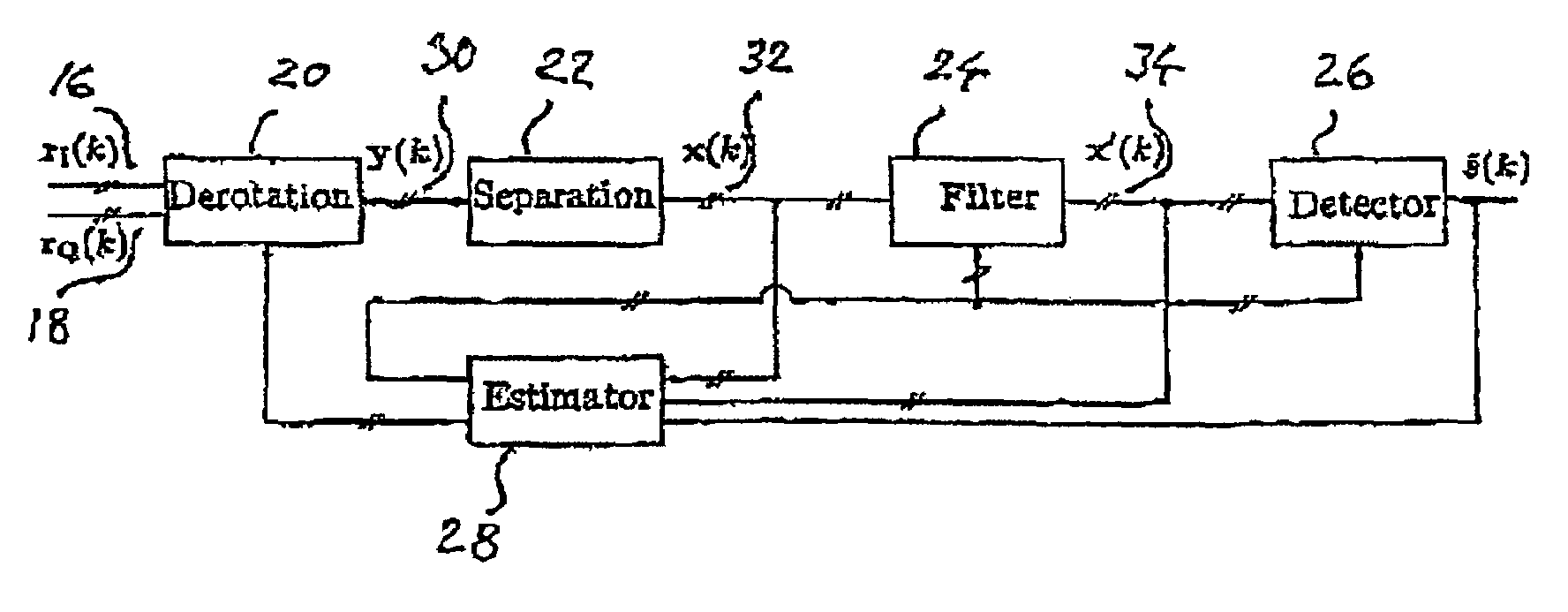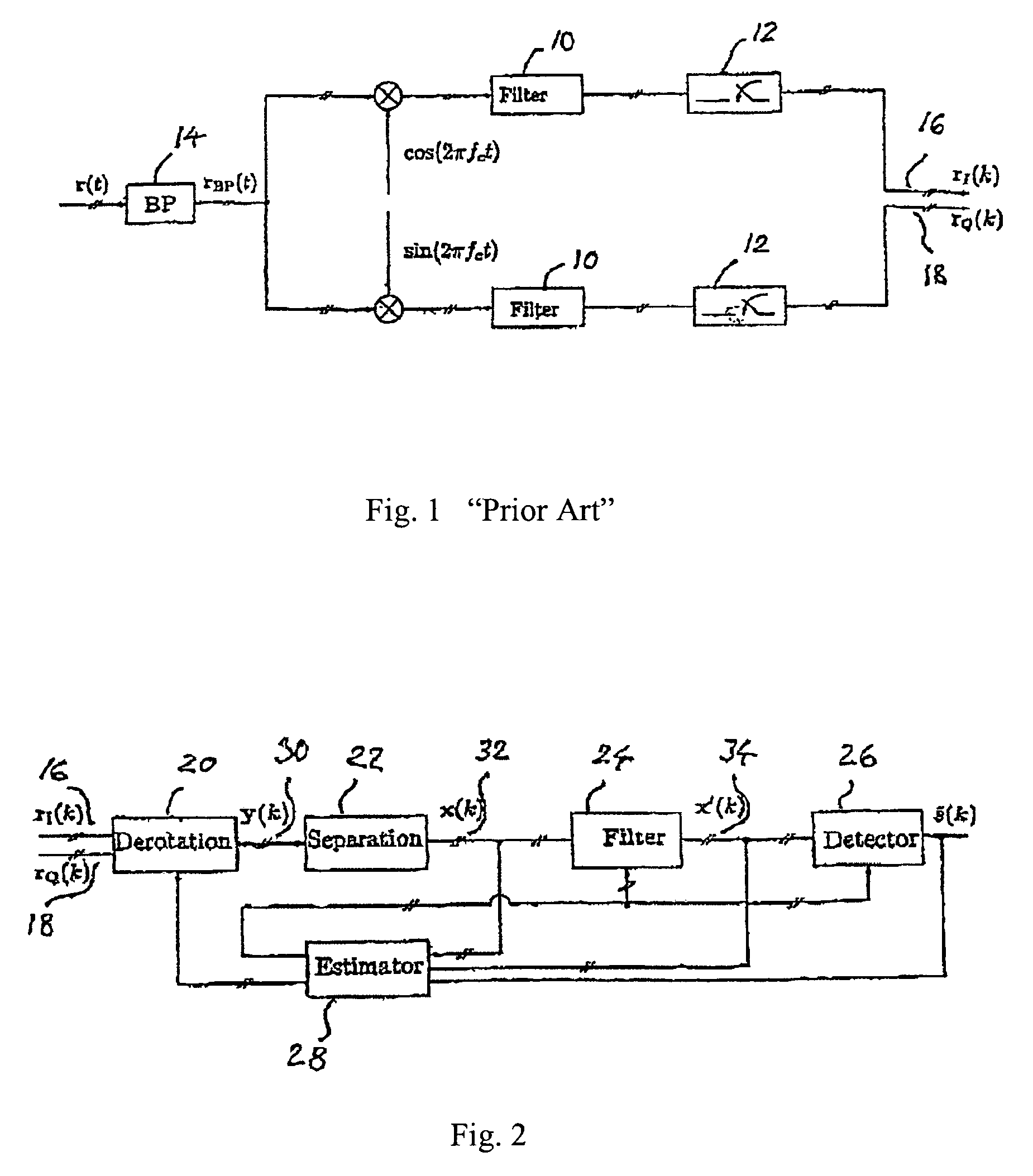Co-channel interference rejection in a digital receiver
a digital receiver and co-channel technology, applied in the field of co-channel interference rejection in a digital receiver, can solve the problems of increasing hardware, inability or unattractive to employ antenna arrays, and difficulty in mobile station implementation, so as to improve co-channel interference and increase the number of frequencies used
- Summary
- Abstract
- Description
- Claims
- Application Information
AI Technical Summary
Benefits of technology
Problems solved by technology
Method used
Image
Examples
Embodiment Construction
[0026]The present invention relates to a method and a receiver with co-channel interference rejection scheme that exploits second order statistics for adaptive co-channel interference rejection in wireless communication. To illustrate the invention, a radio receiver for GSM is described. Extensions to other digital modulation schemes using signal constellations with the specified structure are included in the present invention. Communication signals are in general very structured, for example, the special temporal shape of a transmitted signal in Code Division Multiple Access schemes (CDMA), controlled by different user specific codes, used to separate concurrent channel users.
[0027]The communication signal is in this case thus extremely useful to suppress unwanted signals. Depending on timing offsets, signal strength, etc, the coding separates users more or less efficiently. Here, time division multiple access systems are used to illustrated the invention. For CDMA system that use ...
PUM
 Login to View More
Login to View More Abstract
Description
Claims
Application Information
 Login to View More
Login to View More - R&D
- Intellectual Property
- Life Sciences
- Materials
- Tech Scout
- Unparalleled Data Quality
- Higher Quality Content
- 60% Fewer Hallucinations
Browse by: Latest US Patents, China's latest patents, Technical Efficacy Thesaurus, Application Domain, Technology Topic, Popular Technical Reports.
© 2025 PatSnap. All rights reserved.Legal|Privacy policy|Modern Slavery Act Transparency Statement|Sitemap|About US| Contact US: help@patsnap.com



